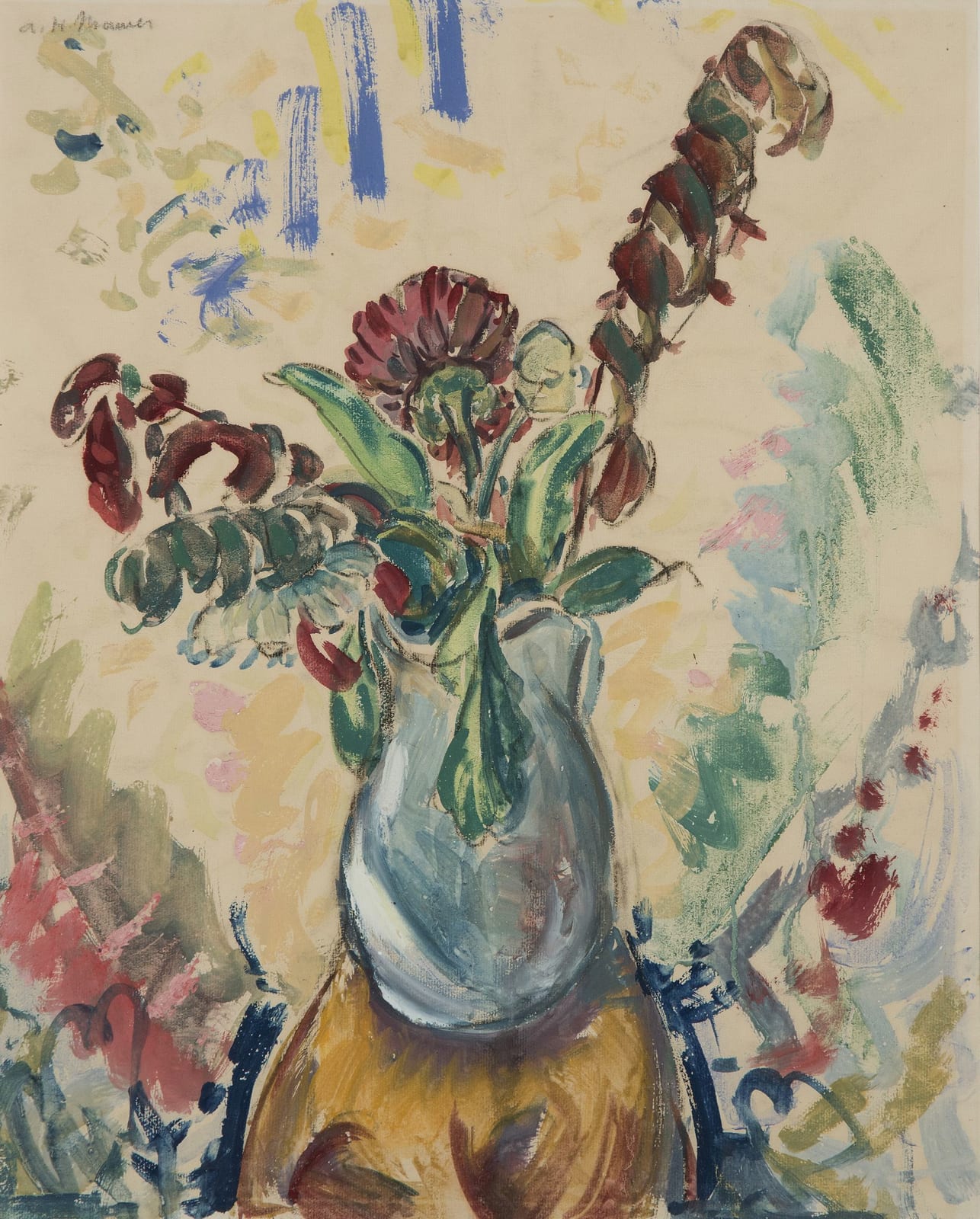Alfred Maurer
Flowers: In White Pitcher on Orange Table, c. 1926-28
Watercolor and gouache on paper
21 1/4 x 15 1/4 inches
Signed at upper left: A. H. Maurer
Alfred Maurer began was among the vanguard American modernists, embracing a fauvist idiom as early as 1907 and progressing through post-Impressionism and Cubism through the end of his life in...
Alfred Maurer began was among the vanguard American modernists, embracing a fauvist idiom as early as 1907 and progressing through post-Impressionism and Cubism through the end of his life in 1932. The present work shows his advanced facility with the lessons of Matisse, one of the few painters in America so sophisticated.
The present work is an ebullient example of Maurer's technique in the mid-twenties. Stacey Epstein, the leading writer on Maurer, has pointed out that even in the decade after the Armory Show, Maurer's work was radical even by the standards of the growing community of American modernists. In her catalogue essay for the 2004 exhibition of Maurer's work at the Demuth Foundation, Epstein described Maurer's advances:
Maurer continued to paint in oils throughout the 1920s, but also began to rely increasingly on gouache and watercolor as expressive vehicles. Working in these media he ... composed stunning florals ... in a kind of personal calligraphy and tended to be ecstatic, loosely painted and consume space. They stand in contrast to Demuth's flower studies of 1920s, which were far more contained, structured, delicate and even diaphonous [Stacey Epstein, Alfred H. Maurer: Modernist Expressions (2004), p. 4]
The thick application of gouache in the present work only underscores the variety of surface treatment that Maurer was capable of in the heart of his modernist phase.
The present work is an ebullient example of Maurer's technique in the mid-twenties. Stacey Epstein, the leading writer on Maurer, has pointed out that even in the decade after the Armory Show, Maurer's work was radical even by the standards of the growing community of American modernists. In her catalogue essay for the 2004 exhibition of Maurer's work at the Demuth Foundation, Epstein described Maurer's advances:
Maurer continued to paint in oils throughout the 1920s, but also began to rely increasingly on gouache and watercolor as expressive vehicles. Working in these media he ... composed stunning florals ... in a kind of personal calligraphy and tended to be ecstatic, loosely painted and consume space. They stand in contrast to Demuth's flower studies of 1920s, which were far more contained, structured, delicate and even diaphonous [Stacey Epstein, Alfred H. Maurer: Modernist Expressions (2004), p. 4]
The thick application of gouache in the present work only underscores the variety of surface treatment that Maurer was capable of in the heart of his modernist phase.
Provenance
The artist; toPrivate collection, New York, by 1932;
Descended in the family, until the present
Exhibitions
William Benton Museum of Art, University of Connecticut, Storrs, Connecticut, Alfred H. Maurer: The Watercolors 1926-28, 1985, no. 10 (as Flowers: In Tall Vase) // The Demuth Foundation, Lancaster, Pennsylvania, Alfred H. Maurer: Modernist Expressions, 2004 (as Flower: In Tall Vase)Subscribe to our mailing list to receive updates from the gallery
* denotes required fields
We will process the personal data you have supplied in accordance with our privacy policy (available on request). You can unsubscribe or change your preferences at any time by clicking the link in our emails.

